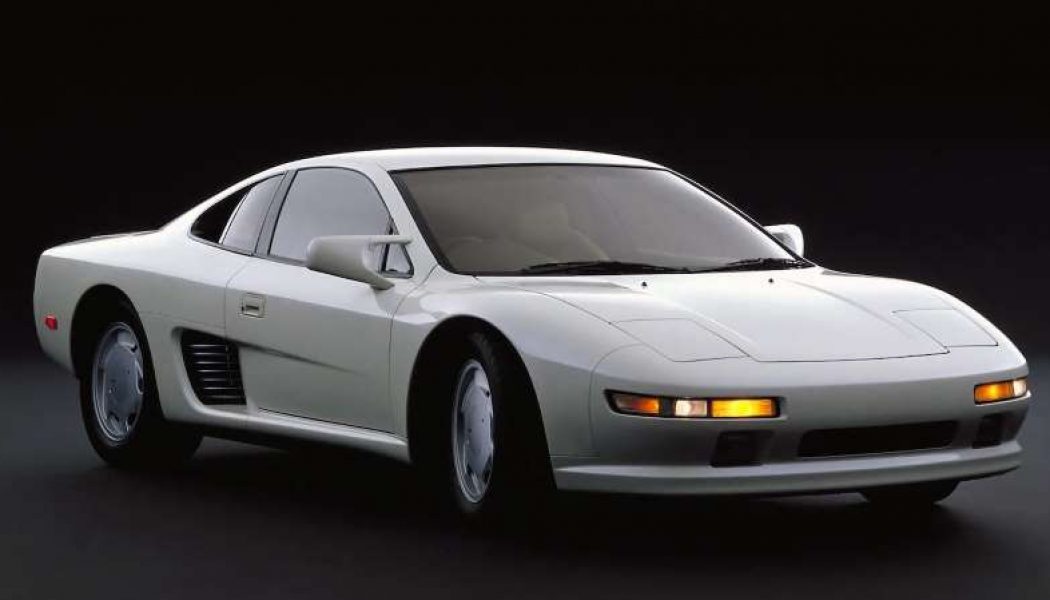The above car might look like a discarded design study for the Acura NSX, or maybe an unlicensed BMW M1/Ferrari Testarossa mashup, but it’s actually the second of two intriguing performance-oriented concept cars that could have sent Nissan on a very different halo-car trajectory. The MID4-II, as the white car is known, has a cleaner and more modern look than its predecessor, the thoroughly mid-1980s MID4. But both were more than mere concepts, seriously considered for production and predating the eventual Acura NSX. And they’re worth knowing about if you want to know why the Z car evolved as it did.
Skipping to the end before the beginning, the MID4s ended up as dead ends. Nissan’s performance future evolved on a few fronts: the affordable Silvia/240SX, the 300ZX that adopted the MID4’s engine, and the all-wheel-drive Skyline GT-Rs known as Godzillas. There’s not much open space in that constellation for a mid-engine sports car, but at least the VG30DETT engine became the screaming heart of the twin-turbocharged Z32 300ZX and a four-wheel steering system explored on the MID4-II turned into the HICAS system used on the R32 Skyline GT-R. So something good came out of the exercise, even if no mid-engined Nissan did.
Things could have gone differently. As our man Angus MacKenzie relates, when the original MID4 debuted at the 1985 Tokyo Motor Show, its futuristic shape and advanced all-wheel-drive system landed with quite an impact. What was most impressive, however, is that it was ready to go. Nissan billed it as a concept, but it was fully fleshed out and drivable, practically ready for dealerships. Its AWD system presaged the GT-R’s ATTESA system, and so did its all-wheel steering. It featured more a more modest engine: a naturally aspirated, quad-cam VG30DE that debuted in this concept and would eventually power the non-turbo 300ZX and various Nissan sedans.
Up front, the original MID4 is a bit generic. There’s a hint of Porsche 944, a dash of Toyota MR2, and a hint of Lotus Esprit. But the rear styling is wild. Big, solid flying buttresses with small vents shade a giant rear deckled and small, upright rear window. A bluff tail is adorned with louvered vents, with a big embossed “NISSAN” in between two surprisingly understated taillights. The louvers continue below, in the lower rear bumper. From the back, it looks like its wheels will fold underneath before it rises to hover over the road, like a prop from Blade Runner.
Its successor took things to the next level. The styling, as noted above, is more reminiscent of the NSX. But the restyling also smoothes and elongates the rest of the car. Like the regular MID4, the MID4-II gets a lot more interesting from behind. The taillights are the first thing to stand out, looking for all the world like the “zenki” 1995-1996 Silvia/240SX, a single continuous shape with a heckblende in between the two taillight housings. Look up to the decklid and spy the massive, quadrilateral power bulge, something like an Iso Grifo’s unusual hood scoop, but more exaggerated and in a different place. Overall, it’s softer and yet more muscular, very much more a product of the upcoming 1990s than a last gasp of 1980s design.
And that twin-turbocharged, intercooled V-6 brought the heat: 325 horsepower. That sounds great in what appears to be a reasonably sized package with advanced traction and handling technologies. The thing is, as MacKenzie relates, it was rumored the MID4-II wasn’t great to drive. In addition, the Z32 was already in development and marching steadily towards production. In twin-turbo form, the Z32 300ZX would be great to drive. The MID4-II was no longer needed, and the 300ZX took its place as one of the company’s two performance halo cars.
Meanwhile, the NSX was also great to drive, too, with development input from none other than Ayrton Senna, and it put Acura on the map as a force to be reckoned with. Did Nissan make the right call? We’ll never know.








![Harry Styles Jokes About Spitting on Chris Pine [Updated]](https://www.wazupnaija.com/wp-content/uploads/2022/09/harry-styles-jokes-about-spitting-on-chris-pine-updated-327x219.jpg)

